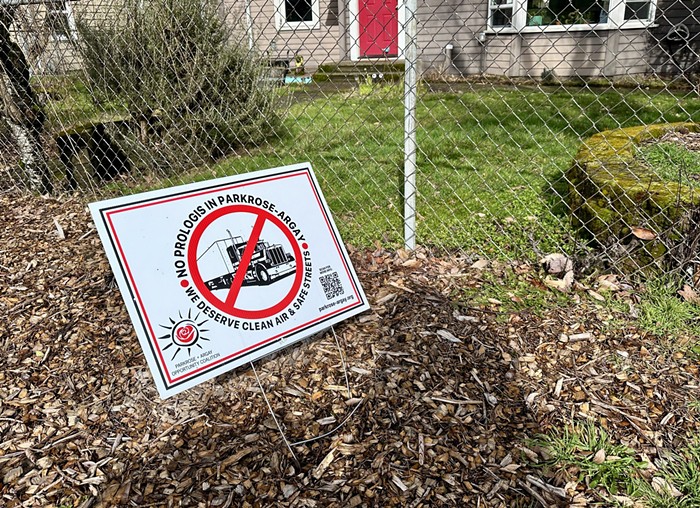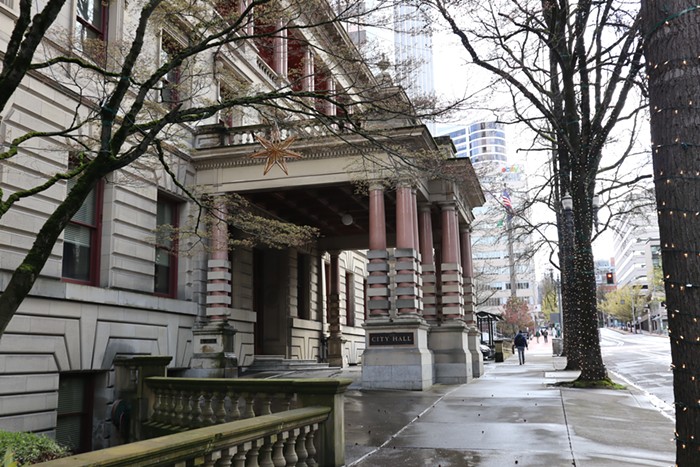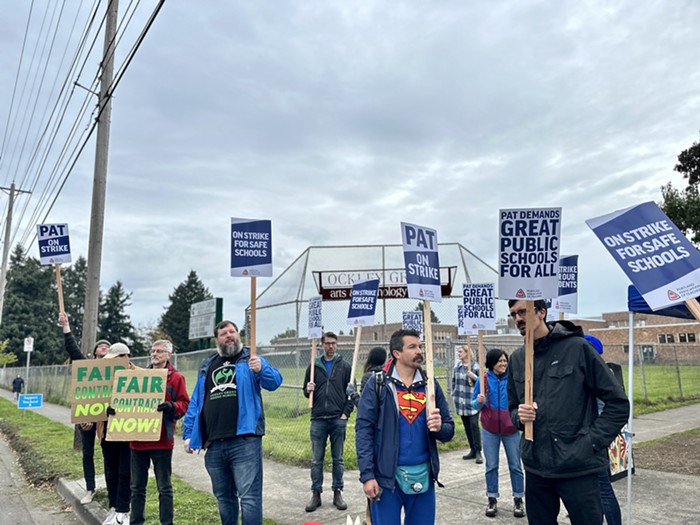AT A SUSTAINABLE chili factory on the outskirts of Salem, several dozen school lunch ladies and local food activists are witnessing the creation of what they hope will be the cafeteria food of the future. Forget meatloaf trucked in from 1,000 miles away.
On a factory floor reeking of onions, a shuddering metal machine splattered with a layer of chunky chili mixes all local, sustainably grown vegetables into portable containers designed for easy reheating.
Portland Public Schools (PPS) already serves this vegan chili once every three weeks in its cafeterias, according to Kristine Obbink, PPS nutrition services director. Now Obbink and others are hoping the legislature will vote to fund a program that gives all Oregon public schools money to buy locally grown foods for their cafeterias. The innovative Farm to School Bill (House Bill 2800) takes aim at two things Oregonians take seriously: their children and their food.
Pizza is served in Portland high schools every day and in middle schools every other day, due in part to the fact that Oregon is one of only four states nationwide that does not give public schools any money for their lunch programs.
At a hearing last week, doctors, parents, and Oregon farmers told state legislators that funding local lunches and public school gardens would combat obesity and help the environment by cutting down on the miles food travels to the plate.
"If a superintendent tries to buy local foods right now, that money would come out of the classroom," notes State Representative Brian Clem. He is the co-sponsor of the Farm to School Bill, which would reimburse public schools up to 15 cents for every student's lunch and seven cents per breakfast to buy Oregon-grown foods. That state investment of roughly $20 million over two years will create over $108 million in economic activity for Oregon's farms and 477 jobs, say Clem and local food advocates.
"Schools can't create a meal that represents our values with the amount of money we're giving them," says Deborah Kane, a vice president at Portland-based environmental group Ecotrust. "In any other budget year, this would be a no-brainer." This session, though, the state is massively cutting programs to fill a $3 billion recession-induced budget shortfall.
Representative Clem is not dissuaded. Money for the Farm to School Program would come from the lottery fund.
"We are going to spend a lot of money on economic development, the question is what's the best way," says Clem. "Our money ought to be spent supporting local and Oregon businesses. I'm not a fan of the 'Walmart-ization' of the economy."
Last year, Ecotrust won a $295,000 grant from Kaiser Permanente to spend seven cents per public school lunch on local foods. The district decided to spend all the money on one completely local meal a month, partnering with regional farmers to bring Oregon-grown pears, parsnips, and beans to school lunch plates.
Hundreds of school lunch directors, nutritionists, and activists toured Portland's schools in March as part of a National Farm to Cafeteria Conference that looked to the Portland program as a model. If HB 2800 doesn't pass, says PPS Nutrition Services Director Obbink, "We'll be back to ground zero, where we were before."
The push for local foods in Oregon public schools is part of the national mainstreaming of the local foods movement. Just weeks ago, the Obamas won headlines by planting an organic garden on the White House lawn. Locally, Oregon farmers produce $4.9 billion in agriculture a year, but schools still truck in cheaper, pre-packaged foods from thousands of miles away.
"We live in a strange time where kids are much more likely to recognize a corporate logo than they are a carrot poking out of the ground," says Kane.
Jones Farm in the verdant Gervais Valley boasts the shortest farm-to-school food delivery in Oregon, handing off fruits and vegetables to the tiny schoolhouse located on the edge of the farm.
Fifth generation farmer Jeff Rosenblatt of Happy Harvest Farms says that since schools, including Reed College and local public schools, have started buying his crop, "The biggest problem is I can't grow enough." The farthest he drives to deliver schools thousands of pounds of watermelons, berries, and vegetables is 120 miles.



















